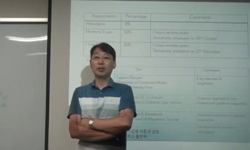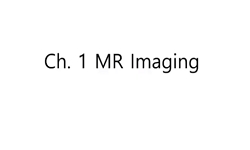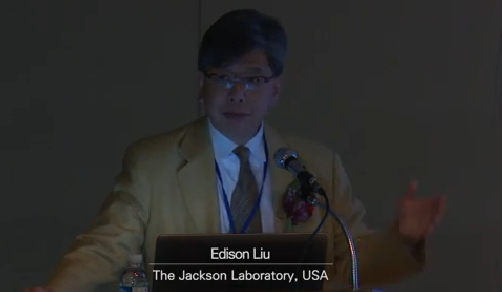Objective: To evaluate the validity of two abbreviated protocols (AP) of MRI in breast cancer screening of dense breast tissue. Materials and Methods: This was a retrospective study in 356 participants with dense breast tissue and negative mammograph...
http://chineseinput.net/에서 pinyin(병음)방식으로 중국어를 변환할 수 있습니다.
변환된 중국어를 복사하여 사용하시면 됩니다.
- 中文 을 입력하시려면 zhongwen을 입력하시고 space를누르시면됩니다.
- 北京 을 입력하시려면 beijing을 입력하시고 space를 누르시면 됩니다.
https://www.riss.kr/link?id=A105094704
-
저자
Shuang-Qing Chen (Nanjing Medical University) ; Min Huang (Nanjing Medical University) ; Yu-Ying Shen (Nanjing Medical University) ; Chen-Lu Liu (Nanjing Medical University) ; Chuan-Xiao Xu (Nanjing Medical University)

- 발행기관
- 학술지명
- 권호사항
-
발행연도
2017
-
작성언어
English
- 주제어
-
등재정보
KCI등재,SCIE,SCOPUS
-
자료형태
학술저널
-
수록면
470-475(6쪽)
-
KCI 피인용횟수
21
- DOI식별코드
- 제공처
- 소장기관
-
0
상세조회 -
0
다운로드
부가정보
다국어 초록 (Multilingual Abstract)
Objective: To evaluate the validity of two abbreviated protocols (AP) of MRI in breast cancer screening of dense breast tissue.
Materials and Methods: This was a retrospective study in 356 participants with dense breast tissue and negative mammography results. The study was approved by the Nanjing Medical University Ethics Committee. Patients were imaged with a full diagnostic protocol (FDP) of MRI. Two APs (AP-1 consisting of the first post-contrast subtracted [FAST] and maximum-intensity projection [MIP] images, and AP-2 consisting of AP-1 combined with diffusion-weighted imaging [DWI]) and FDP images were analyzed separately, and the sensitivities and specificities of breast cancer detection were calculated.
Results: Of the 356 women, 67 lesions were detected in 67 women (18.8%) by standard MR protocol, and histological examination revealed 14 malignant lesions and 53 benign lesions. The average interpretation time of AP-1 and AP-2 were 37 seconds and 54 seconds, respectively, while the average interpretation time of the FDP was 3 minutes and 25 seconds. The sensitivities of the AP-1, AP-2, and FDP were 92.9, 100, and 100%, respectively, and the specificities of the three MR protocols were 86.5, 95.0, and 96.8%, respectively. There was no significant difference among the three MR protocols in the diagnosis of breast cancer (p > 0.05). However, the specificity of AP-1 was significantly lower than that of AP-2 (p = 0.031) and FDP (p = 0.035), while there was no difference between AP-2 and FDP (p > 0.05).
Conclusion: The AP may be efficient in the breast cancer screening of dense breast tissue. FAST and MIP images combined with DWI of MRI are helpful to improve the specificity of breast cancer detection.
참고문헌 (Reference)
1 Hooley RJ, "Screening US in patients with mammographically dense breasts: initial experience with Connecticut Public Act 09-41" 265 : 59-69, 2012
2 Morris EA, "Rethinking breast cancer screening: ultra FAST breast magnetic resonance imaging" 32 : 2281-2283, 2014
3 Sprague BL, "Prevalence of mammographically dense breasts in the United States" 106 : 2014
4 Sharma U, "Potential of diffusion-weighted imaging in the characterization of malignant, benign, and healthy breast tissues and molecular subtypes of breast cancer" 6 : 126-, 2016
5 이은혜, "Performance of Screening Mammography: A Report of the Alliance for Breast Cancer Screening in Korea" 대한영상의학회 17 (17): 489-496, 2016
6 Yoon H, "Metabolomics of breast cancer using high-resolution magic angle spinning magnetic resonance spectroscopy: correlations with 18F-FDG positron emission tomography-computed tomography, dynamic contrast-enhanced and diffusionweighted imaging MRI" 11 : e0159949-, 2016
7 Boyd NF, "Mammographic density and the risk and detection of breast cancer" 356 : 227-236, 2007
8 Pollán M, "Mammographic density and risk of breast cancer according to tumor characteristics and mode of detection: a Spanish population-based case-control study" 15 : R9-, 2013
9 고수연, "Mammographic Density Estimation with Automated Volumetric Breast Density Measurement" 대한영상의학회 15 (15): 313-321, 2014
10 Heywang SH, "MR imaging of the breast with Gd-DTPA: use and limitations" 171 : 95-103, 1989
1 Hooley RJ, "Screening US in patients with mammographically dense breasts: initial experience with Connecticut Public Act 09-41" 265 : 59-69, 2012
2 Morris EA, "Rethinking breast cancer screening: ultra FAST breast magnetic resonance imaging" 32 : 2281-2283, 2014
3 Sprague BL, "Prevalence of mammographically dense breasts in the United States" 106 : 2014
4 Sharma U, "Potential of diffusion-weighted imaging in the characterization of malignant, benign, and healthy breast tissues and molecular subtypes of breast cancer" 6 : 126-, 2016
5 이은혜, "Performance of Screening Mammography: A Report of the Alliance for Breast Cancer Screening in Korea" 대한영상의학회 17 (17): 489-496, 2016
6 Yoon H, "Metabolomics of breast cancer using high-resolution magic angle spinning magnetic resonance spectroscopy: correlations with 18F-FDG positron emission tomography-computed tomography, dynamic contrast-enhanced and diffusionweighted imaging MRI" 11 : e0159949-, 2016
7 Boyd NF, "Mammographic density and the risk and detection of breast cancer" 356 : 227-236, 2007
8 Pollán M, "Mammographic density and risk of breast cancer according to tumor characteristics and mode of detection: a Spanish population-based case-control study" 15 : R9-, 2013
9 고수연, "Mammographic Density Estimation with Automated Volumetric Breast Density Measurement" 대한영상의학회 15 (15): 313-321, 2014
10 Heywang SH, "MR imaging of the breast with Gd-DTPA: use and limitations" 171 : 95-103, 1989
11 Moschetta M, "MR evaluation of breast lesions obtained by diffusion-weighted imaging with background body signal suppression (DWIBS) and correlations with histological findings" 32 : 605-609, 2014
12 Graf O, "Large rodlike calcifications at mammography: analysis of morphologic features" 200 : 299-303, 2013
13 Roubidoux MA, "Invasive cancers detected after breast cancer screening yielded a negative result: relationship of mammographic density to tumor prognostic factors" 230 : 42-48, 2004
14 Berg WA, "How well does supplemental screening magnetic resonance imaging work in high-risk women?" 3 : 2193-2196, 2014
15 서미리내, "Features of Undiagnosed Breast Cancers at Screening Breast MR Imaging and Potential Utility of Computer-Aided Evaluation" 대한영상의학회 17 (17): 59-68, 2016
16 Heacock L, "Evaluation of a known breast cancer using an abbreviated breast MRI protocol: correlation of imaging characteristics and pathology with lesion detection and conspicuity" 85 : 815-823, 2016
17 Kızıldag Yırgın I, "Diffusion weighted MR imaging of breast and correlation of prognostic factors in breast cancer" 33 : 301-307, 2016
18 Berg WA, "Detection of breast cancer with addition of annual screening ultrasound or a single screening MRI to mammography in women with elevated breast cancer risk" 307 : 1394-1404, 2012
19 Kul S, "Contribution of diffusion-weighted imaging to dynamic contrast-enhanced MRI in the characterization of breast tumors" 196 : 210-217, 2011
20 Mandelson MT, "Breast density as a predictor of mammographic detection: comparison of interval- and screendetected cancers" 92 : 1081-1087, 2000
21 Harvey SC, "An abbreviated protocol for high-risk screening breast MRI saves time and resources" 13 : 374-380, 2016
22 Grimm LJ, "Abbreviated screening protocol for breast MRI: a feasibility study" 22 : 1157-1162, 2015
23 Mango VL, "Abbreviated protocol for breast MRI: are multiple sequences needed for cancer detection?" 84 : 65-70, 2015
24 Moschetta M, "Abbreviated combined MR protocol: a new faster strategy for characterizing breast lesions" 16 : 207-211, 2016
25 Kuhl CK, "Abbreviated breast magnetic resonance imaging (MRI):first postcontrast subtracted images and maximum-intensity projection-a novel approach to breast cancer screening with MRI" 32 : 2304-2310, 2014
26 Tudorica LA, "A feasible high spatiotemporal resolution breast DCE-MRI protocol for clinical settings" 30 : 1257-1267, 2012
동일학술지(권/호) 다른 논문
-
- 대한영상의학회
- 이명은
- 2017
- KCI등재,SCIE,SCOPUS
-
- 대한영상의학회
- 김현주
- 2017
- KCI등재,SCIE,SCOPUS
-
Assessment of Cervical Cancer with a Parameter-Free Intravoxel Incoherent Motion Imaging Algorithm
- 대한영상의학회
- Anton S. Becker
- 2017
- KCI등재,SCIE,SCOPUS
-
- 대한영상의학회
- 이규목
- 2017
- KCI등재,SCIE,SCOPUS
분석정보
인용정보 인용지수 설명보기
학술지 이력
| 연월일 | 이력구분 | 이력상세 | 등재구분 |
|---|---|---|---|
| 2023 | 평가예정 | 해외DB학술지평가 신청대상 (해외등재 학술지 평가) | |
| 2020-01-01 | 평가 | 등재학술지 유지 (해외등재 학술지 평가) |  |
| 2016-11-15 | 학회명변경 | 영문명 : The Korean Radiological Society -> The Korean Society of Radiology |  |
| 2010-01-01 | 평가 | 등재학술지 유지 (등재유지) |  |
| 2007-01-01 | 평가 | 등재학술지 선정 (등재후보2차) |  |
| 2006-01-01 | 평가 | 등재후보 1차 PASS (등재후보1차) |  |
| 2003-01-01 | 평가 | 등재후보학술지 선정 (신규평가) |  |
학술지 인용정보
| 기준연도 | WOS-KCI 통합IF(2년) | KCIF(2년) | KCIF(3년) |
|---|---|---|---|
| 2016 | 1.61 | 0.46 | 1.15 |
| KCIF(4년) | KCIF(5년) | 중심성지수(3년) | 즉시성지수 |
| 0.93 | 0.84 | 0.494 | 0.06 |






 KCI
KCI







